Survey Of 500+ Publishers Reveals How They Want To Be Pitched [Part II]
A well-written subject line is the key to getting great placements, but how do you craft a good one? Contributor Kelsey Libert shares tips based on a survey of more than 500 publishers.
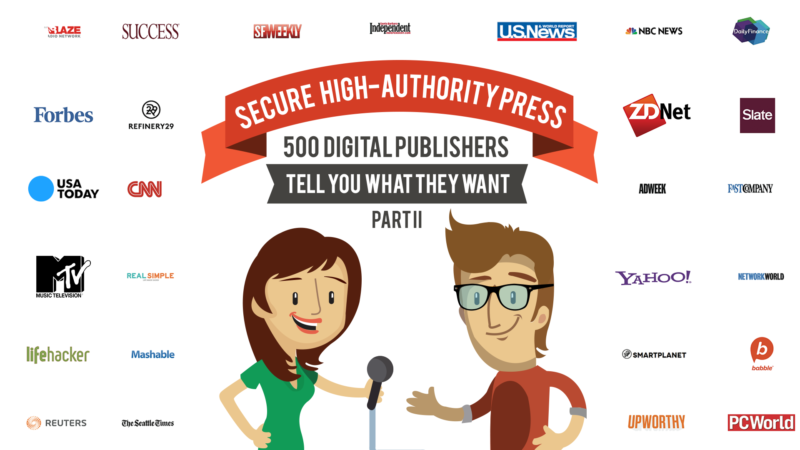
Earning placements from high-authority publishers is the single best way to garner the most views, shares, and syndications for your content.
But, the number of professional content marketers has exploded since 2011, which means the number of pitches publishers are receiving is even larger.
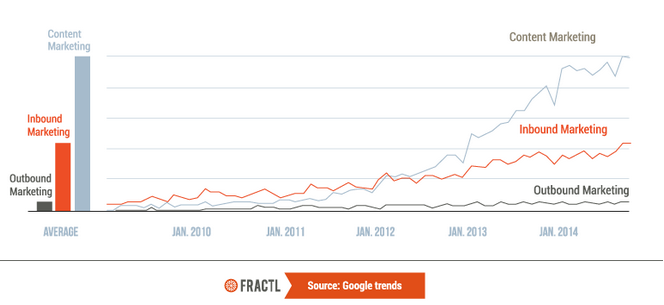
How can you cut through the noise of all those pitches? Fractl (my employer) partnered with BuzzStream to survey 500 publishers and ask them that very question. (You can download the full report from our site.)
The answer points back to one small, quick and extremely critical element of your pitch: your subject line.
Pitching Traffic Patterns
We know from our last publisher study that the volume of email in publishers’ inboxes is exorbitant, averaging more than 2x that of the average worker. While the boom in content marketing has made competition stiff for press coverage, some verticals are suffering even more.
We found that the inboxes of editors covering lifestyle topics are probably the most crowded. Based on our survey results, editors receive more than 68% of all pitches, seven times more than bloggers or writers.
Of top 10 verticals that receive more than 300 pitches per day, lifestyle receives the bulk of the traffic at 26.1%. Lifestyle, entertainment and tech niches combined attract more than half of all high-volume pitches.
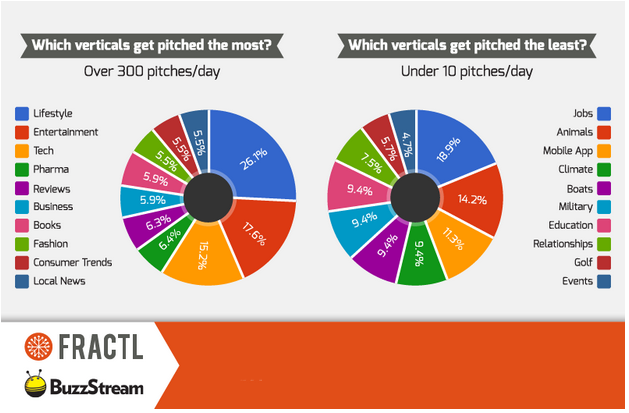
While many marketers might be clamoring for attention in some high-profile verticals, there are topics that typically receive far fewer pitches.
Jobs, animals, and climate top the list of verticals that receive less than 10 pitches per day. These angles, along with boats, military, education, and relationships, may be underutilized in content marketing..
Savvy marketers can learn a few things based on pitch traffic trends alone:
- If you’re pitching in the most crowded verticals, be prepared to go above and beyond to stand out. With publishers in lifestyle, tech, and entertainment receiving up to 1,500 pitches a week, you will need to offer stories or assets that are both particularly unique and high quality in order to stand out.
- Creative angles can gain coverage. If you can find a good connection between your content and some of the lesser-pitched verticals, you’ll have an easier time catching the eyes of publishers with less crowded inboxes. But don’t get creative at the cost of remaining relevant to the writer’s beat or you may earn their attention only to end up in the spam box.
- Diversify your contacts. With editors having literally thousands of emails to sift through each week, you may find success reaching out to some well-matched writers and bloggers instead. If your pitch convinces them that the content is a good fit for their publication, they’ll be your advocate with editors and other decision makers.
Your Subject Line Is The Gatekeeper To Great Placements
Eighty-one percent (81%) of publishers prefer to receive pitches via email, which means that subverting the inbox crowd by cold calling or reaching out via social media is not an option.
Even more critical: 85% of publishers open pitches based on the subject line alone. This makes the subject line the single most important aspect to improve in order to earn more attention for your pitches.
Luckily there are six very specific characteristics that publishers told us they’re looking for in a pitch:
1. Appropriate Tone in Subject Line
The tone of the subject line is very important. More than half of publishers are looking to be pitched with a line that is descriptive, specific, and above all, tailored to their beat.
Telling them exactly what you have and why it’s relevant to their work trumps a provocative or catchy subject. No matter what, avoid crafting a line that looks like click bait.
Nearly 100% told us they were against sensationalist tones of “This is incredible!” or “You won’t believe what we found!” Furthermore, don’t forget that those types of subject lines are increasingly flagged by spam filters.

2. Concise Subject Line
You should strive to entice publishers to open your pitch in 10 words or less, as 75% agree this is the length they’re most likely to read.
This word range is practical from two standpoints: First, brevity allows publishers to read and process your pitch idea quickly. When they’re pressed for time, they’ll be more likely to look at your short pitch than one that looks too verbose and time consuming.
Second, short subject lines are less apt to get cut off in inboxes.
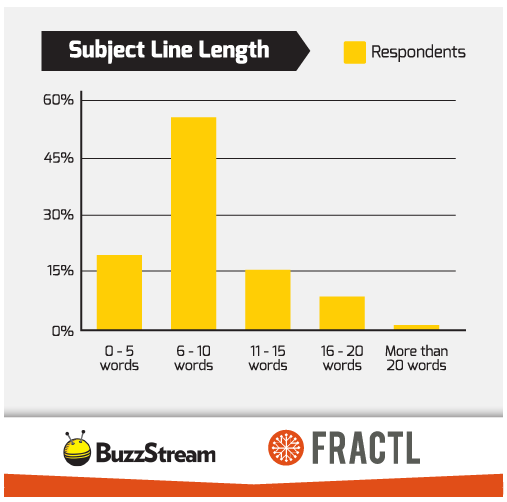
3. Useful Assets Offered
Publishers want you to tell them upfront what kind of assets you have to offer.
About two thirds (66.7%) are interested in data visualizations such as infographics, high res images, and videos, but over 85% are eager for your raw data.
You may not have thought to make this raw data available to publishers, but there are two very good reasons to offer it:
- Letting them see your data allows them to easily verify your findings and corroborate your story. Your data ensures they can maintain journalistic integrity and provide honest, truthful reporting, and is a signal of high-quality work from you and your agency.
- Access to your raw research also gives publishers the opportunity to look at other angles they may be interested in, which may inspire additional coverage in the future.

4. A Personal Touch
Sixty-four percent (64%) of publishers agree that establishing a personal relationship before you pitch is a good practice.
It may seem counterintuitive that such busy people want you to reach out and make an effort to get to know them, but people with a personal relationship are more likely to understand a writer’s beat and send relevant pitches, and less likely to send spam.
With that in mind, 66% of publishers also said they’d be more likely to open a pitch if you indicate a previous relationship in the subject line.
This is an encouragement for marketers to not only work to get to know publishers, but to maintain those relationships and utilize them again for future outreach.
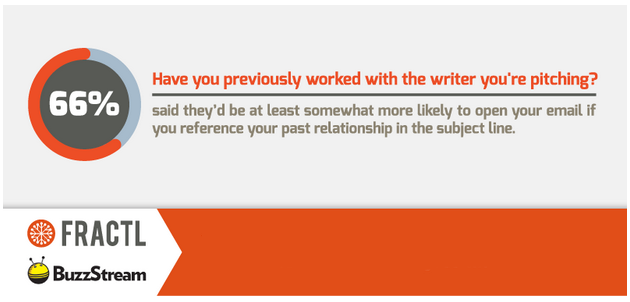
5. Exclusivity
Offering an exclusive will gain you an advantage with nearly half of publishers; 48.5% told us that they are never or very rarely open to syndications.
This doesn’t mean you don’t need a syndication strategy; a breaking news story or unfortunate headline choice could ruin the potential reach of your first pickup, making your syndicated pickups even more important.
But if you are offering a publisher the first opportunity to post a hot story, be sure to let them know it’s an exclusive in your subject line.
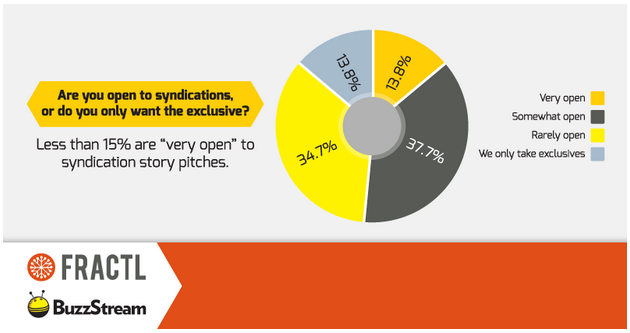
6. Respect For Their Time
Finally, one thing publishers are NOT looking for is multiple reminders to respond to your pitch. With tight deadlines and a flood of email to tend, they are sometimes short on time to reply to every pitch, particularly those that won’t work for them.
It’s okay to send one or two follow-ups in case your pitch truly did get overlooked in the shuffle, but 87% of publishers agree that any more than that and you’ll appear to be a spammer.
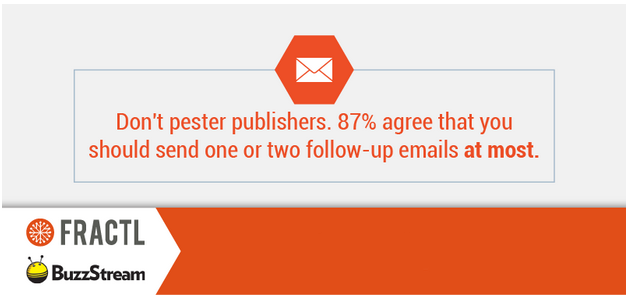
Contributing authors are invited to create content for MarTech and are chosen for their expertise and contribution to the martech community. Our contributors work under the oversight of the editorial staff and contributions are checked for quality and relevance to our readers. MarTech is owned by Semrush. Contributor was not asked to make any direct or indirect mentions of Semrush. The opinions they express are their own.
Related stories
New on MarTech